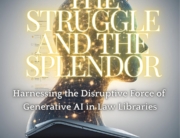By Karen Oesterle, Head of Reference
The 2021 PLLIP Diversity & Inclusion Summit was held on Friday, Feb 26, 2021. The keynote speaker, Michelle Silverthorn, best-selling author, keynote speaker, and Founder & CEO of Inclusion Nation, was deeply impressive. The event was a nice combination of keynote address, zoom breakout rooms for discussion, and a final workshop applying the day’s work. We spent the day addressing these topics in ways that were different and new for many attendees.
For example, Michelle shared the above graphic. The first panel shows the unintended results of an attempt to be fair, while the second shows a better solution. And then we moved on to why the boys were behind the fence and not in the stands, with her encouragement to observe what is happening in the moment.
Michelle shared research on identical resumes submitted with a Black-sounding name or a white-sounding name. For years, statistics showing the ‘Jennifer’ resume receives many more responses than the ‘Jasmine’ one have remained constant. In fact, even the ‘Jennifer’ resume with a criminal past receives more callbacks than the ‘Jasmine’ resume with no criminal history. Michelle also shared her own experiences. As a Black woman living in a predominantly white part of Chicago, she is routinely presumed to be the nanny of her two biracial daughters.
If we are committed to diversity and inclusion, we may need to have a number of uncomfortable conversations. In intending to recognize and interrupt stereotypes, what skills do we need to learn to reduce the discomfort? We can observe what is happening in the moment and explore explanations for what might be happening. We can use empathy, not criticism. Who are our allies in doing this work? Michelle encouraged us to use our platform and resources to amplify those who are excluded because of bias.
Michelle then asked us to identify our challenge in making our workplace more diverse and inclusive. What are the systemic challenges in my workplace? We met in smaller groups in breakout rooms to discuss these. Challenges varied by type of library in my groups, and sharing our situations was helpful and enlightening. We spoke of frustrations and also ideas and best practices we had seen.
When we reconvened for our workshop with Michelle, she asked us to write down the challenge we face in making our workplace more diverse and inclusive. Then she had us ask Why? 5 times, capturing the new challenge each time. She provided an example of a firm whose challenge was that Black attorneys were under-represented in the partner ranks. After the five-time iteration, they realized their challenge was that firm attorneys liked to work with people that were most like them. Per Michelle, the real challenge that you reach after asking Why? 5 times is one you can address. What is the answer to that challenge? To be effective, the answer to your challenge must consider these 4 factors and should include at least 3 and ideally all of these.
- Desirability – does your solution solve the right pain point?
- Feasibility – is your solution low-risk/high-reward so that stakeholders will commit to implementing it?
- Measurability – are the outcomes of your solution able to be measured and reported on?
- Strategic Value – how does your solution align with the strategic goals?
She closed by reminding us that working toward diversity will be very difficult, and we should be of good courage!


























